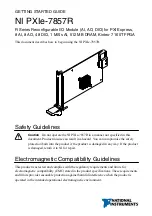
ImmersionRC | EzUHF R/C Control System
15
On the EzOSD end, the wires should be connected as follows:
Note: These can be simply spliced into the cable which connects the EzOSD to the current sensor.
Red: +5v
Black: Gnd
Yellow: i2c SCL
White: i2c SDA
Note that when using the direct link between the EzOSD and the EzUHF, the RSSI calibration in the
EzOSD is not required. This calibration feature applies only to the connection of an analog RSSI signal to
the EzOSD.
Antenna Selection
In the FPV hobby today, far too little attention is paid to antennas. A good choice of Tx and Rx antennas,
for the video link, can make a huge difference in range.
For the uplink side, using a UHF link, this is also critical.
Retailers and distributors of the EzUHF system are asked to carry a selection of suitable antennas which
may be used for various types of model, and flight style.
The following commonly-available antennas have been use successfully by the ImmersionRC design and
test teams during many months of testing.
Diamond SRH771
This is a higher-gain whip, semi-flexible, which has been shown to give excellent. This antenna
is easy to find on E-Bay, and costs around $20.
It is most suitable at the Tx end, on the ground, but when placed on a model also, vertically, it
has been shown to provide an extremely solid, long range link.
Note that this antenna does have some gain, and therefore has ‘flattened doughnut’ radiation
pattern. If the antenna, used on the Tx side, is pointed directly at the model, there will be a







































